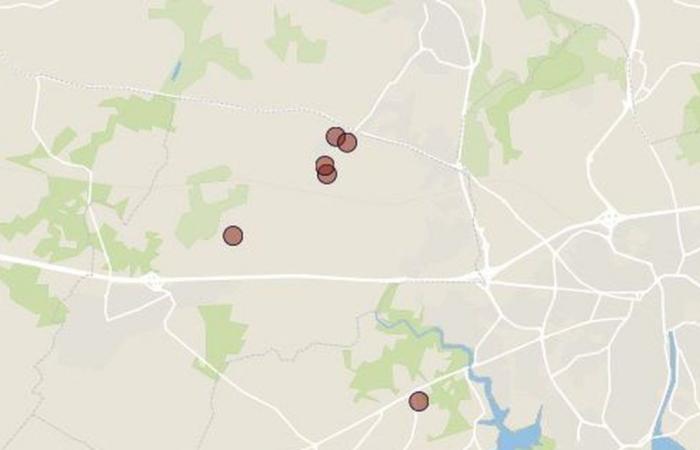
How do you explain the series of earthquakes felt in the Vannes and Auray sectors in recent days?
Eric Beucler : This is an area that we monitor fairly regularly. These different earthquakes occurred north of Ploeren. Already in February 2021, a series of small tremors were felt in this same sector. We are here on the South Armorican shear. There was a plate boundary 350 million years ago. Here, near the route of the current dual carriageway, there is the trace of a fault but the border between the two tectonic plates has long since closed. So here we are on a big scientific question.
So, what hypotheses are you putting forward?
We are in a region where there are many fault branches which can explain these tremors. They are generally close to the shear without necessarily being on it. Even if it is weak, there is perhaps still a tectonic engine which generates these sudden movements, along the faults.
Right now we are also in a period where there is a lot of water that can get into the rocks. Studies in other regions have shown that a hydraulic factor can create rock movements, hydroseismicity.
How do you observe these earthquakes?
The observatory in which we work in Nantes is responsible for maintaining the seismological network. For the northwest quarter, we are in charge of 27 seismological stations. In Morbihan, they are based in Béganne, Lorient, Guehenno and Belle-île-en-mer. They allowed us to identify 60 (61 once the last one this Friday is confirmed by a seismologist) earthquakes of natural origin between January 1, 2018 and October 11, 2024. The most important in terms of magnitude took place on March 14, 2024 around 11 p.m. Its local magnitude was 3.
The last earthquakes felt were recorded between 2.1 and 2.9. How can we explain that they were strongly felt?
The latest earthquakes are quite shallow: between 4 and 10 km deep. This explains why they are really felt. The deeper the earthquake, the more you can feel it. We must differentiate between magnitude – the energy released – and intensity – the energy felt. Both are not always proportional. It depends on the depth, where you are in relation to how the earthquake occurred. Right now, people may be more receptive.
You distinguish between earthquakes which are natural and others which you describe as anthropogenic, explain to us…
On small seismicities, work in recent years shows that we are around four earthquakes per week in the northwest quarter. But the vast majority is not felt and is only recorded by seismometers. In these energy records, we have career firing, military exercises but also what we call “mine warfare”, these mines from the Second World War found close to our sides by the navy and exploded. Analysts know the difference.
Earthquakes in Brittany
Should we be worried?
In light of the data recorded since the middle of the 20th century, there is no reason to imagine that significant earthquakes, that is to say of magnitude greater than 5.5, could occur since there are no There’s no major flaw here. But we must be humble, our knowledge only dates back around fifty years. And for buildings, normally no, there is no reason to worry. We are talking here about ground movements, at the level of the epicenter of a few micrometers.





